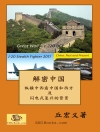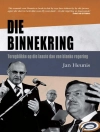In the second half of the nineteenth century, global labor migration, trade, and overseas study brought China and the United States into close contact, leading to new cross-cultural encounters that brought mixed-race families into being. Yet the stories of these families remain largely unknown. How did interracial families negotiate their identities within these societies when mixed-race marriage was taboo and ‘Eurasian’ often a derisive term?
In
Eurasian, Emma Jinhua Teng compares Chinese-Western mixed-race families in the United States, China, and Hong Kong, examining both the range of ideas that shaped the formation of Eurasian identities in these diverse contexts and the claims set forth by individual Eurasians concerning their own identities. Teng argues that Eurasians were not universally marginalized during this era, as is often asserted. Rather, Eurasians often found themselves facing contradictions between exclusionary and inclusive ideologies of race and nationality, and between overt racism and more subtle forms of prejudice that were counterbalanced by partial acceptance and privilege.
By tracing the stories of mixed and transnational families during an earlier era of globalization,
Eurasian also demonstrates to students, faculty, scholars, and researchers how changes in interracial ideology have allowed the descendants of some of these families to reclaim their dual heritage with pride.
Inhoudsopgave
List of Illustrations
A Note on Romanization
Acknowledgments
Prelude
Introduction
Part One
1. A Canton Mandarin Weds a Connecticut Yankee: Chinese-Western Intermarriage Becomes a ‘Problem’
2. Mae Watkins Becomes a ‘Real Chinese Wife’: Marital Expatriation, Migration, and Transracial Hybridity
Part Two
3. ‘A Problem for Which There Is No Solution’: The New Hybrid Brood and the Specter of Degeneration in New York’s Chinatown
4. ‘Productive of Good to Both Sides’: The Eurasian as Solution in Chinese Utopian Visions of Racial Harmony
5. Reversing the Sociological Lens: Putting Sino-American ‘Mixed Bloods’ on the Miscegenation Map
Part Three
6. The ‘Peculiar Cast’: Navigating the American Color Line in the Era of Chinese Exclusion
7. On Not Looking Chinese: Chineseness as Consent or Descent?
8. ‘No Gulf between a Chan and a Smith amongst Us’: Charles Graham Anderson’s Manifesto for Eurasian Unity in Interwar Hong Kong
Coda: Elsie Jane Comes Home to Rest
Epilogue
Chinese Character Glossary
Notes
Bibliography
Index
Over de auteur
Emma Jinhua Teng is a Mac Vicar Faculty Fellow and the T.T. and Wei Fong Chao Professor of Asian Civilizations and Associate Professor of Chinese Studies at MIT and the author of Taiwan's Imagined Geography: Chinese Colonial Travel Writing and Pictures, 1683-1895 (Harvard, 2004).












